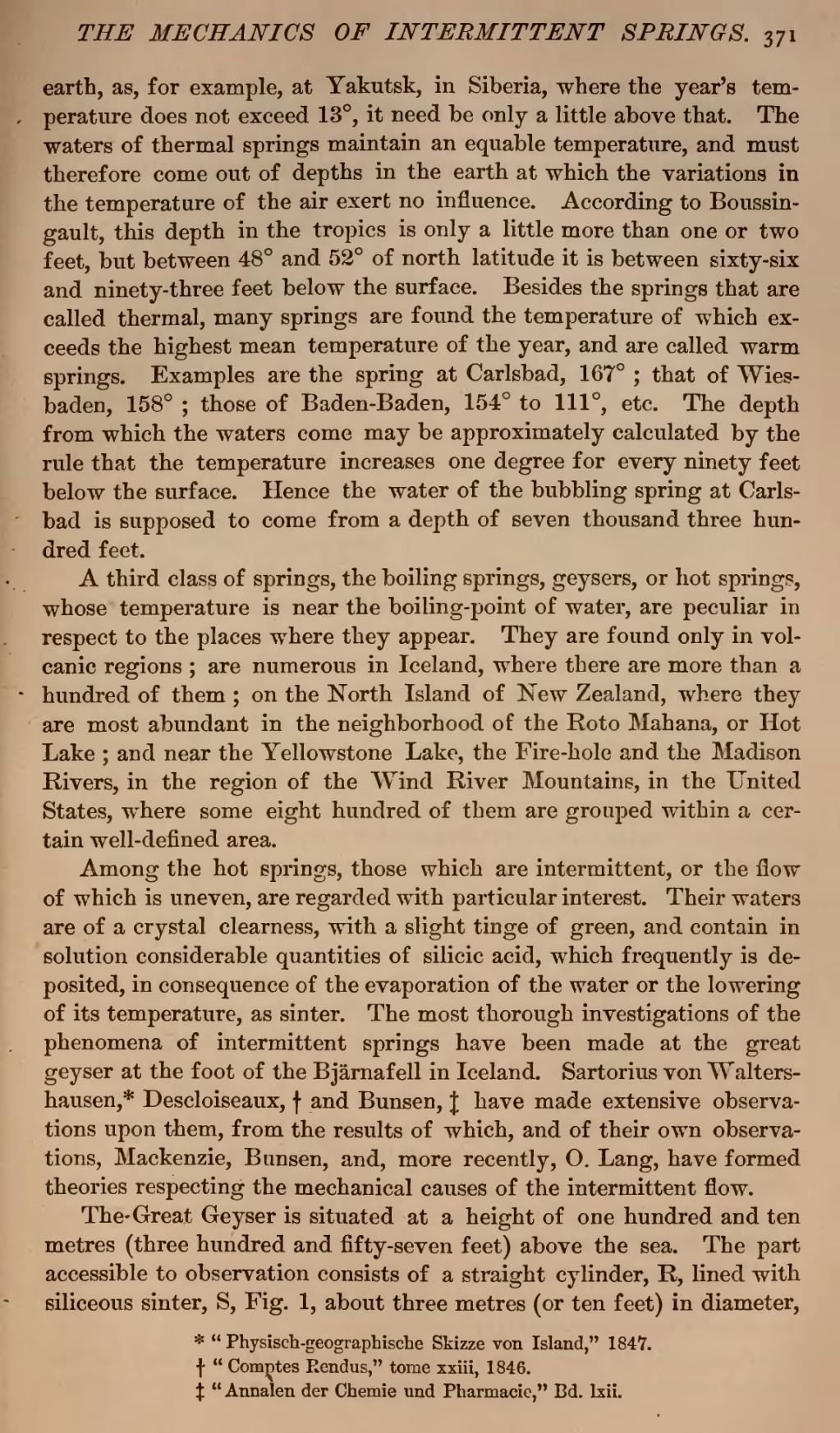earth, as, for example, at Yakutsk, in Siberia, where the year's temperature does not exceed 13°, it need be only a little above that. The waters of thermal springs maintain an equable temperature, and must therefore come out of depths in the earth at which the variations in the temperature of the air exert no influence. According to Boussingault, this depth in the tropics is only a little more than one or two feet, but between 48° and 52° of north latitude it is between sixty-six and ninety-three feet below the surface. Besides the springs that are called thermal, many springs are found the temperature of which exceeds the highest mean temperature of the year, and are called warm springs. Examples are the spring at Carlsbad, 167°; that of Wiesbaden, 158°; those of Baden-Baden, 154° to 111°, etc. The depth from which the waters come may be approximately calculated by the rule that the temperature increases one degree for every ninety feet below the surface. Hence the water of the bubbling spring at Carlsbad is supposed to come from a depth of seven thousand three hundred feet.
A third class of springs, the boiling springs, geysers, or hot springs, whose temperature is near the boiling-point of water, are peculiar in respect to the places where they appear. They are found only in volcanic regions; are numerous in Iceland, where there are more than a hundred of them; on the North Island of New Zealand, where they are most abundant in the neighborhood of the Roto Mahana, or Hot Lake; and near the Yellowstone Lake, the Fire-hole and the Madison Rivers, in the region of the Wind River Mountains, in the United States, where some eight hundred of them are grouped within a certain well-defined area.
Among the hot springs, those which are intermittent, or the flow of which is uneven, are regarded with particular interest. Their waters are of a crystal clearness, with a slight tinge of green, and contain in solution considerable quantities of silicic acid, which frequently is deposited, in consequence of the evaporation of the water or the lowering of its temperature, as sinter. The most thorough investigations of the phenomena of intermittent springs have been made at the great geyser at the foot of the Bjärnafell in Iceland. Sartorius von Waltershausen,[1] Descloiseaux,[2] and Bunsen,[3] have made extensive observations upon them, from the results of which, and of their own observations, Mackenzie, Bunsen, and, more recently, O. Lang, have formed theories respecting the mechanical causes of the intermittent flow.
The Great Geyser is situated at a height of one hundred and ten metres (three hundred and fifty-seven feet) above the sea. The part accessible to observation consists of a straight cylinder, R, lined with siliceous sinter, S, Fig. 1, about three metres (or ten feet) in diameter,
